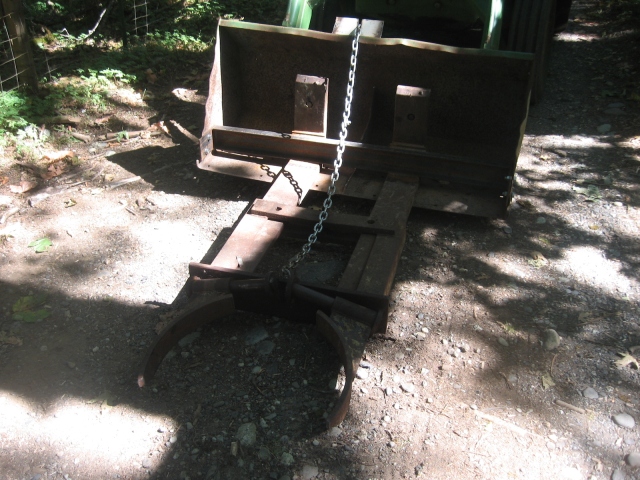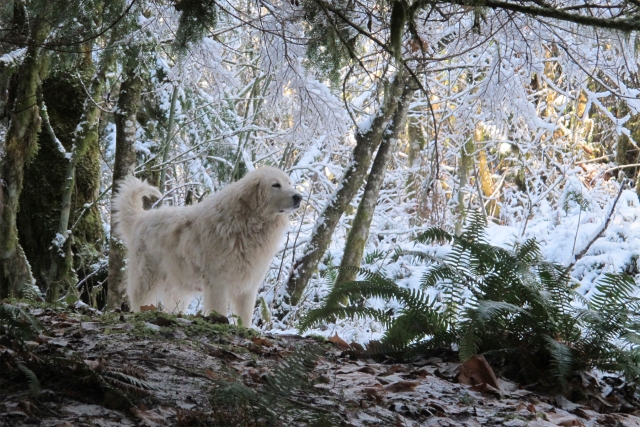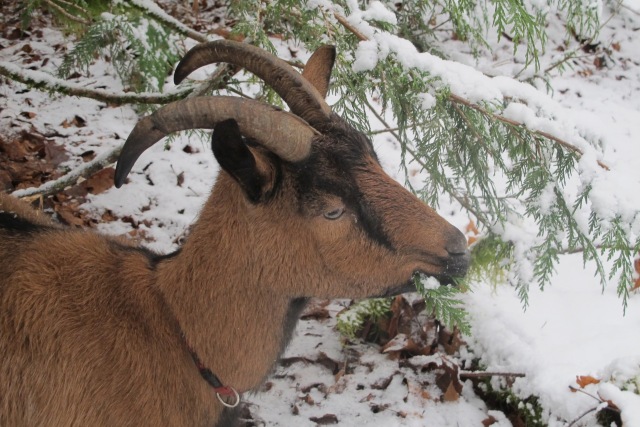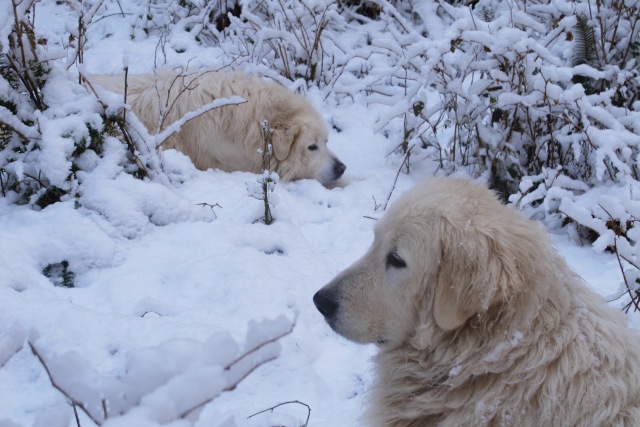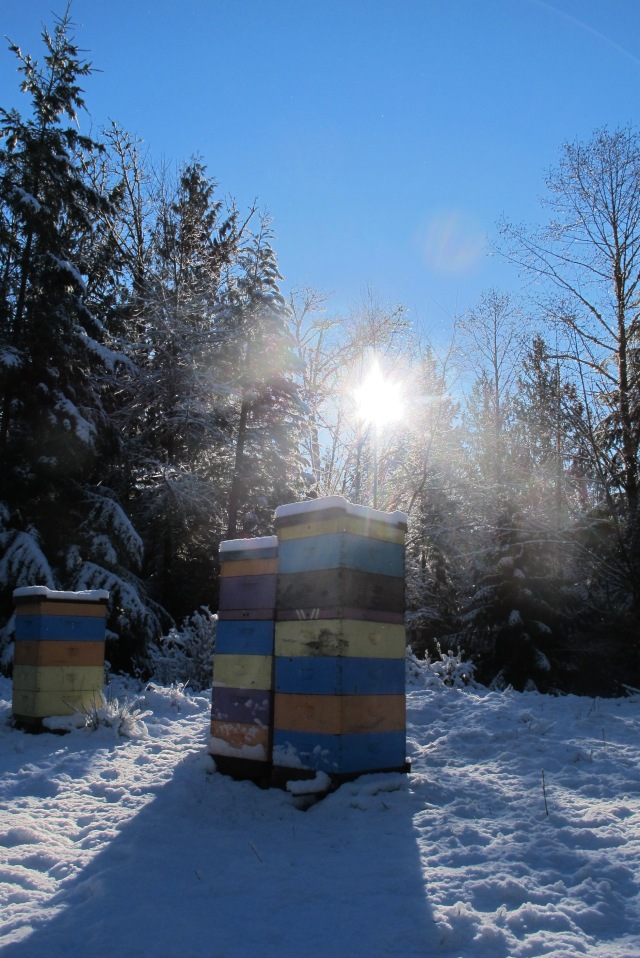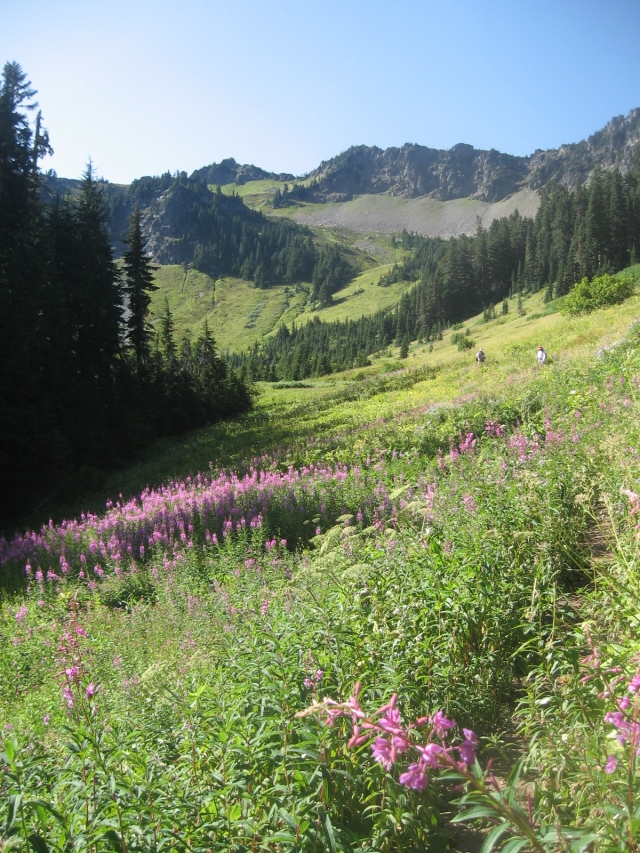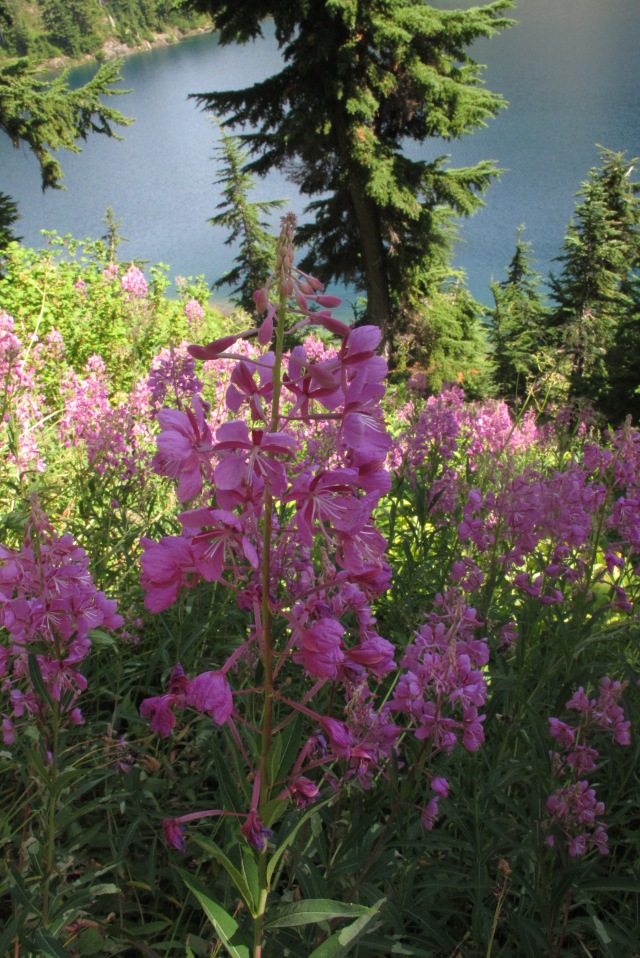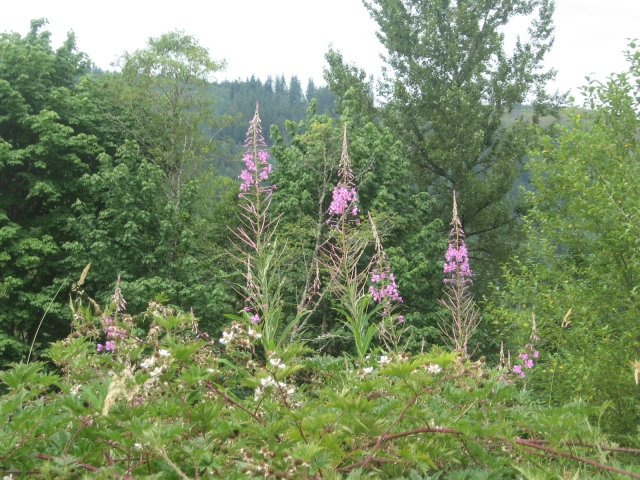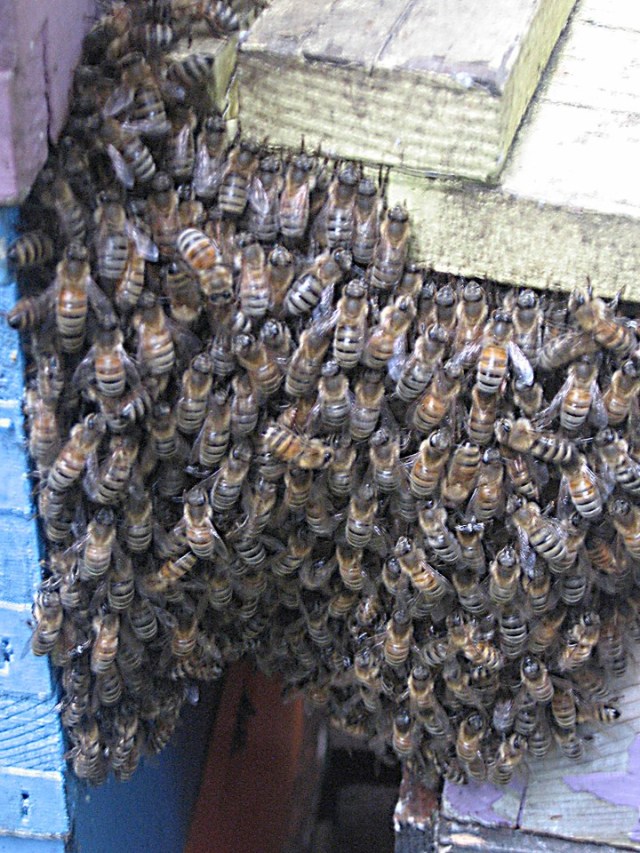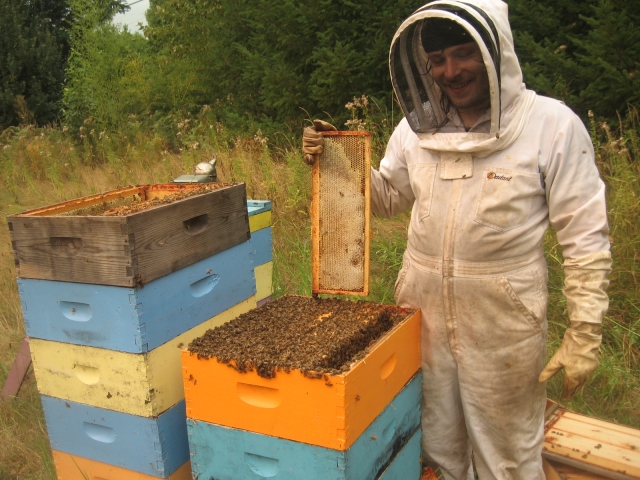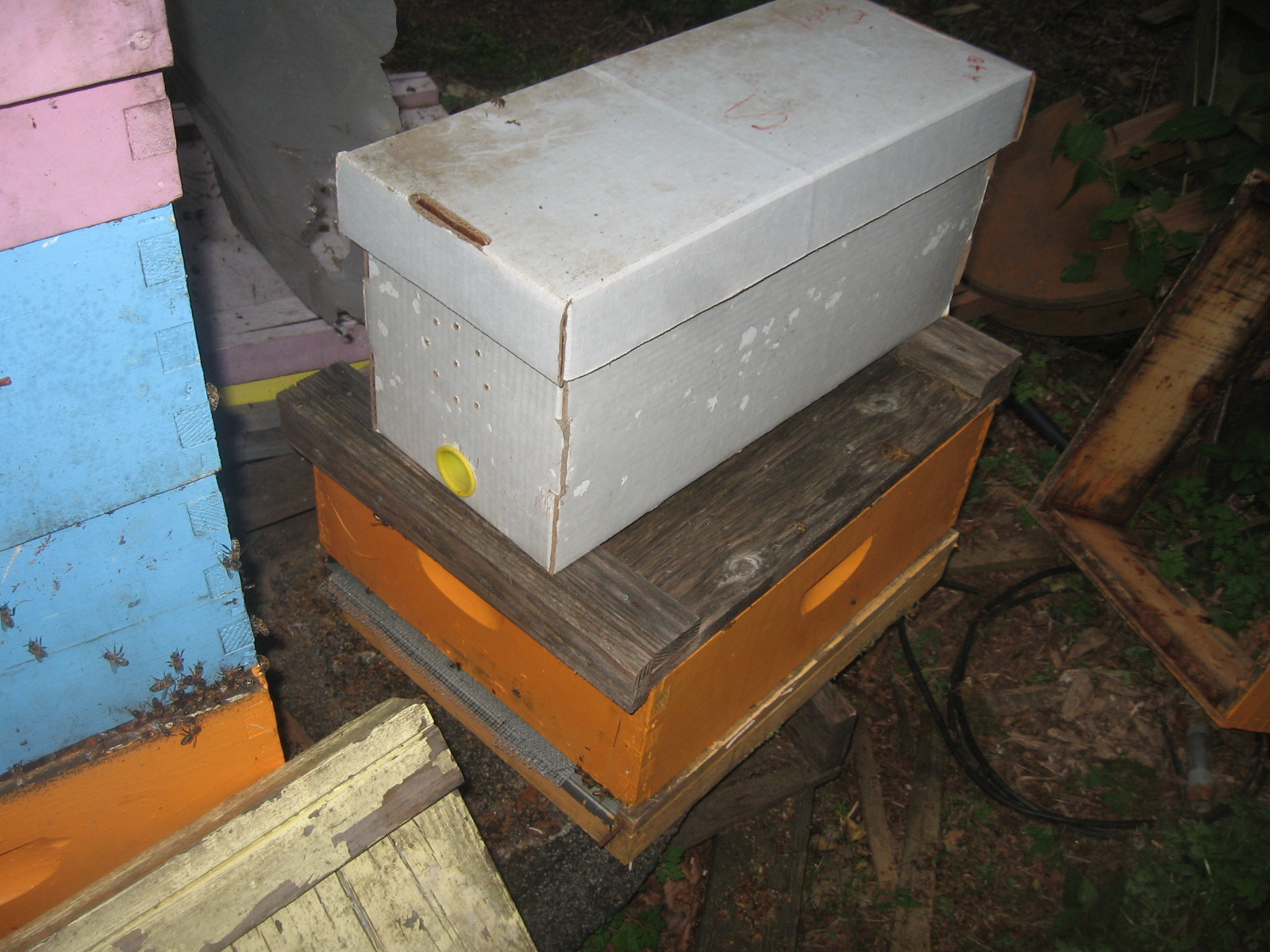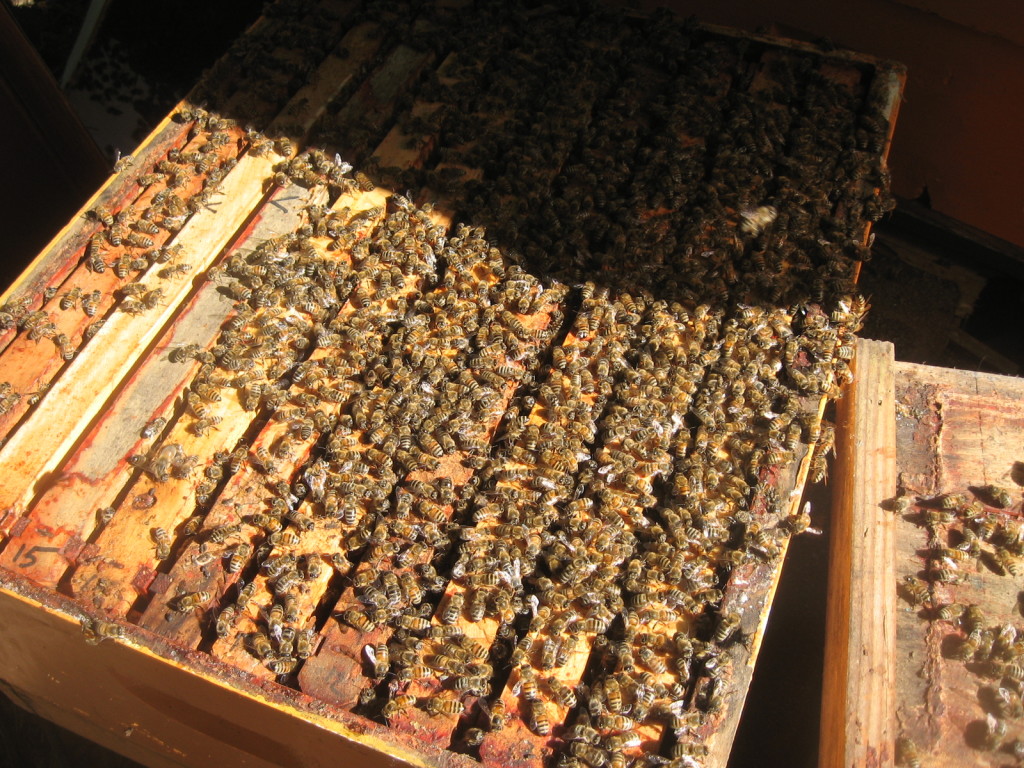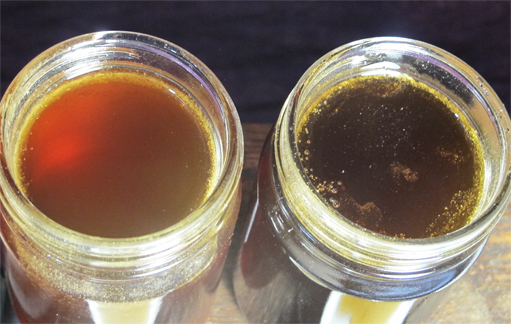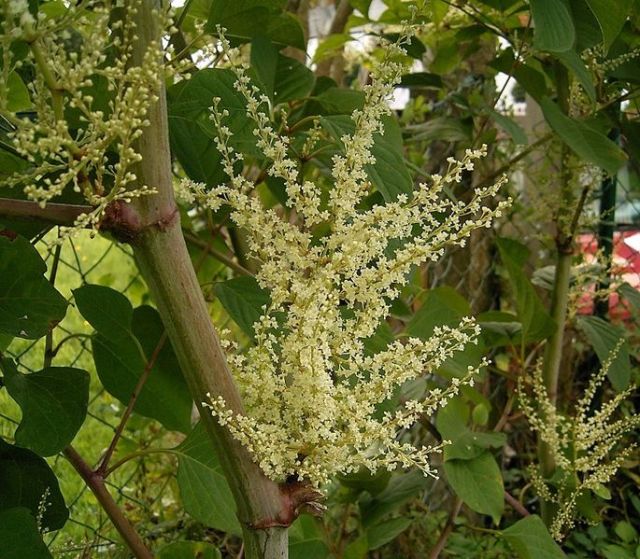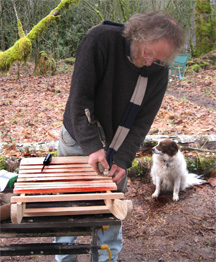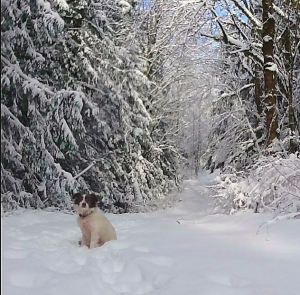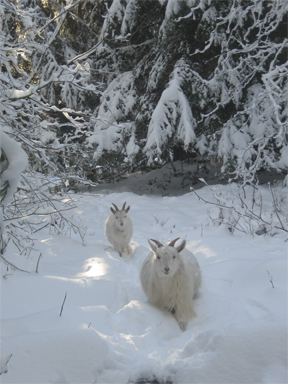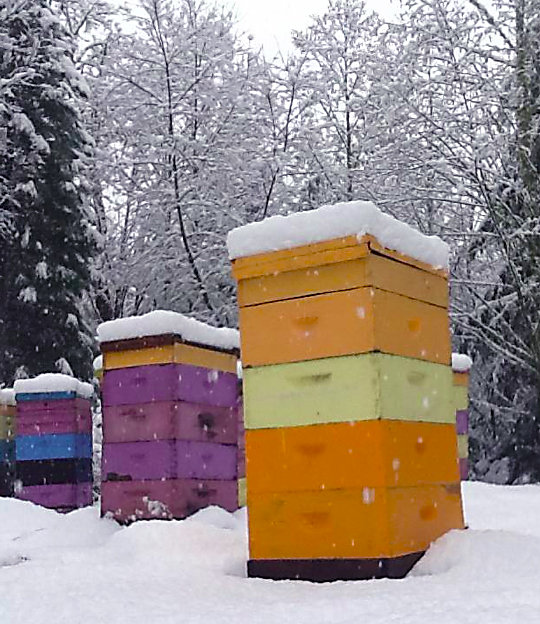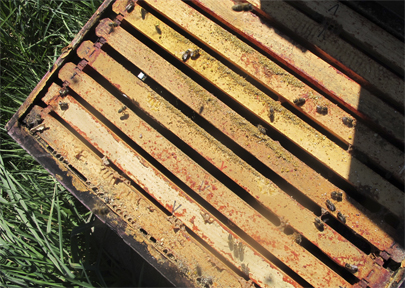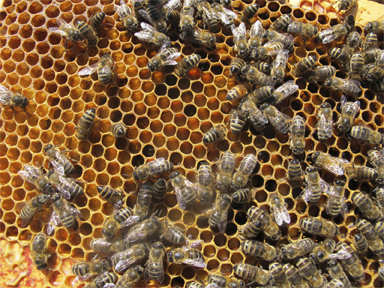Well, here it is new years day, too cold for both the bees and me. So it’s “catch up” time from last summer’s events. There just never seems to be the time to post in the middle of summer work. In 2017 a friend rigged a new barrel hoist for me that hooks to the front of my tractor, and this is its story.
Moving Barrels At Brookfield Farm
A bit of background: I sell honey from my own hives and from friends here in Washington who, like me, run naturally treated, antibiotic-free, or treatment free hives. The website is PacificNorthwestHoney.com, and every Sunday you can find me at the Ballard Farmers Market.
I move about 6 or 7 barrels of honey a year. How to move 55 gallons, over 650 pounds of honey, easily has been an evolving processes. This year, thanks to two friends, I got a new/used unit that makes this far more simple and efficient.
In The Past
Until this year I used a metal barrel hoist that fit around the body of the barrel. The hoist has a ring at the top. We would pass a towing chain though the ring and hook the chain to my tractor’s bucket. It worked, but one had to haul the hoist and chain out of the storage are (otherwise known as the hayloft). Then do all the rigging to get the bucket in the air.
The New Improved Method
A friend who was helping took one look at the older method and said “I’ve got something that would be much better. And you could move them alone.” Well, the first part was right, the second wrong – that friend is a lot stronger than me. You’ll see where strength comes in later.
In about a week or two the friend dropped round with a unit that can be slid on and off of the front of my tractor.
Another friend turned up with a saw that would remove a bit of a upright ridge from the center of the bucket and drill to make the holes that hold the barrel hoist in place.
A chain that runs from the hoist to a steel piece with a notch that my friends bolted to the tractor bucket. When the chain is hooked into the notch, it gives the hoist more support and stability.
I would do without my friends is beyond me. Good friends are worth more than gold.
The Wonderful Removeable Aspect
The rig looks rather like fork lift blades with a barrel lifter on it.
The tractor blade slips under the back of the unit.
The unit has 2 sliding “claws.”
When the bucket is tilted down, they side apart.
When the bucket tilts up, the claws slide to the barrel, holding it firmly.
I practiced by picking up a barrel that was filled with water before I trusted myself with the honey. (Yes, this was done post hip-replacement surgery – totally amazing to me.)
It worked like a charm. I will say the tractor is more of a challenge to steer, but it all works.
Where The Strength Comes In:
To move to barrel to its warm area, it must be place in front of a barrel dolly.
The prongs of the dolly rest against the barrel, a metal clamp goes over the barrel lip.
When the dolly is tilted back, the barrel slides onto the base prongs of the dolly.
Yes, “tilt back”, over 650 pounds tilting back.
I cannot do it on a bet. Again a friend to the rescue, and even he has to jump onto the back of the dolly with both feet to make it tilt.
Oh the joys of moving honey. But I do love my new honey barrel lifter.
That’s all the news that’s fit to type from Brookfield Farm Bees And Honey in Maple Falls, Washington. At the moment it is clear, cold, and, thankfully, snow free. I know the snow’s coming, it usually hits in mid to late January, but for now I’m pleased. At this time last year we were at week 5 of trucks with chains or just walking up to the farm when the snow got too deep. What’s happening? Well, my own “festival of lights”: putting in new ceiling fixtures. Tomorrow I start wiring frames for 2018. Happy New Year to all, may the new year bring you great joy.

